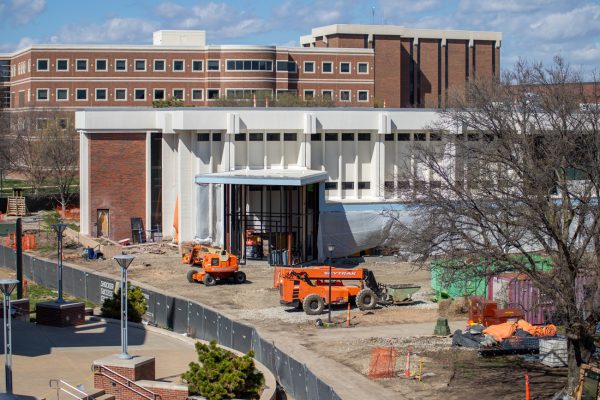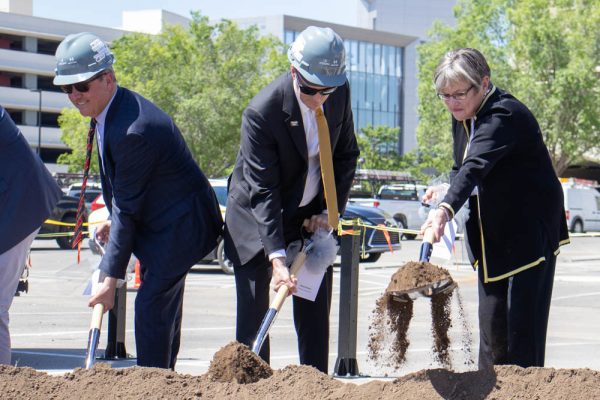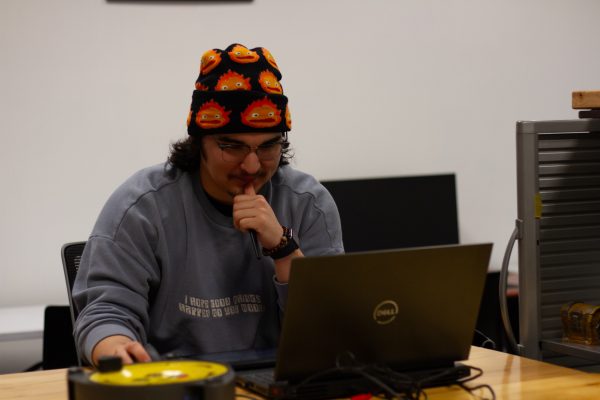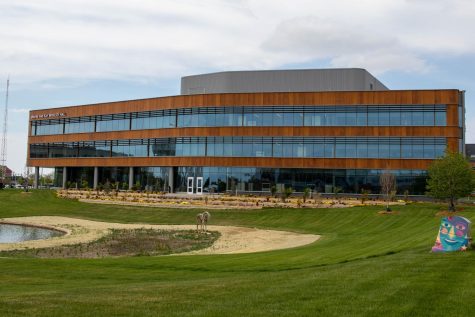Wichita State researchers experiment with particle physics
Wichita State professors and students are embarking in new territories of particle physics.
They have found that new evidence supports the Big Bang Theory and emerging ideas in medical and defense technology.
The Fermilab “Nomi Off-axis Electron Neutrino Appearance” — or NOvA for short — is an international experiment that involves more than 190 scientists. Professors Nick Solomey, Holger Meyer and Mathew Muether from Wichita State’s Department of Mathematics, Statistics and Physics, have been working with Fermilab since 2008.
The research has centered on neutrinos, which are subatomic particles that originate from fission and fusion reactions. Billions of neutrinos are passing at the speed of light through every particle of matter. They can oscillate between three forms: electron, mau and tau neutrinos.
“Neutrinos were created less than a second from the [start of the] Big Bang,” said Alec Lang, a senior physics major. “Neutrinos are so tiny that they interact with so few things [that] they were able to escape the cosmic mess that the big bang created and live on till now … Currently, we can only look to the stars as far as 13 billion light years, but neutrinos offer a way to see past that.”
An accelerator located in Chicago fires mau neutrinos into detectors placed in Chicago and Northern Minnesota, and records the oscillation rate.
As part of WSU’s collaboration with Fermilab, Solomey, Meyer and Muether are able to regulate and monitor the detector located in Northern Minnesota with their own control panel in the basement of Jabara Hall.
Studying neutrinos causes challenges for scientists due to their size, mass and speed at which they travel. Therefore, the Fermilab NOvA research project requires a joint effort from top schools around the country.
“It provides an opportunity for physics students to work alongside researchers from Harvard, [California Institute of Technology] … and other researchers from diverse backgrounds,” Meyer said.
Students help in the process by analyzing large amounts of data that is recorded on tape. They must develop algorithms to identify electron and tau neutrinos that have oscillated from its original form, the mau neutrino.
“[Particle physics can be] intimidating,” Lang said. “I was new to hard physics, but once I sat down and looked over our initial research paper, it was really cool.”
New ideas and technology have emerged through the development of the Fermilab NOvA experiment.
“Really it’s a culture undertaking,” Meyer said. “We want to learn about the world we live in. Often, particle physics experiments also develop technology that is important for other purposes. For example, the particle accelerator require strong magnetic fields and by building magnets better and cheaper, we also develop [better] medical imaging technology.”
The detection of neutrinos may offer a unique way for the U.S. Department of Defense to oversee nuclear weapon production manufactured by neighboring countries, Muether said.
“There are research programs for developing newer technology to monitor the radioactive material from nuclear power plants,” he said.
Watch the detector live at nusoft.fnal.gov/nova/public/.








